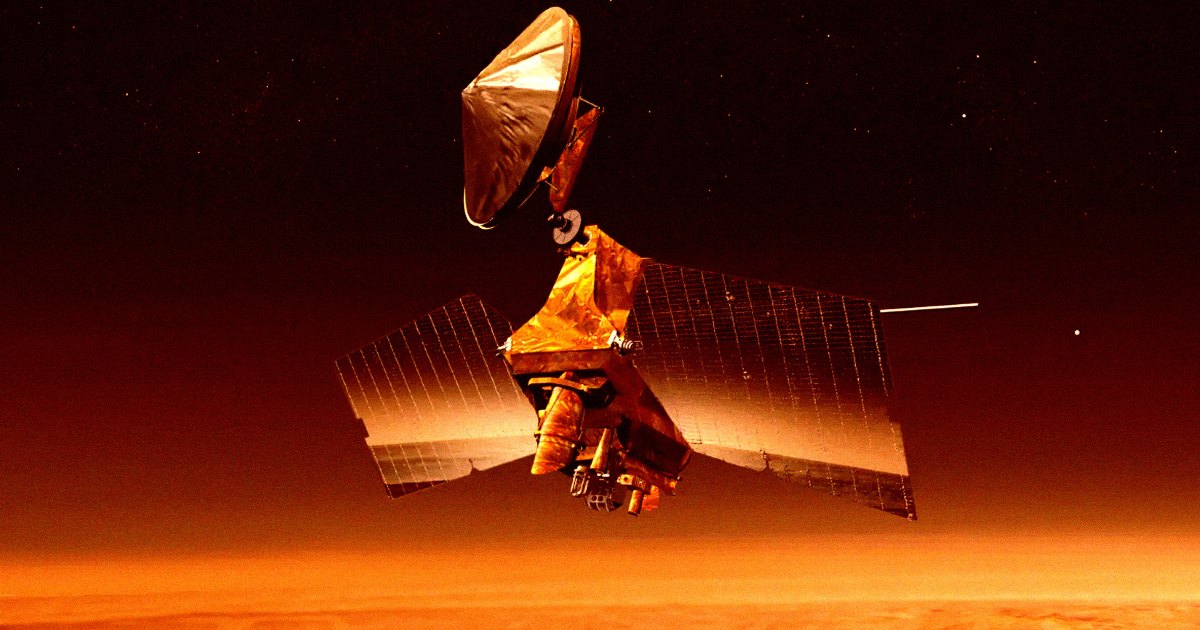Last month, the mysterious interstellar object 3I/ATLAS came within 18 million miles of Mars on its unusual trajectory through our solar system.
During its approach, NASA's Mars Reconnaissance Orbiter used its HiRISE camera to capture high-resolution images of the rare visitor, widely suspected by experts to be a comet. But thanks to a bureaucratic nightmare triggered by the ongoing government shutdown that began just days after the images were taken, scientists still haven't seen them more than a month later.
Last week, Representative Anna Paulina Luna (R-FL) sent a letter to interim NASA Administrator Sean Duffy asking the space agency to release the images, which offer about three times the resolution of the object compared to July images from NASA's Hubble Space Telescope.
“This information is of great importance to improve our understanding of interstellar visitors and their interaction with our solar system,” she wrote. “The brightest pixel in these images provides our most accurate constraint on object size yet.”
Duffy appears to have taken note of her request – but the result won't make the astronomers happy.
“Just had a good conversation with NASA about 3I/ATLAS,” she tweeted on Wednesday. “As soon as the government reopens they will release images/data.”
“For bureaucratic reasons, this is unfortunately not possible until then,” wrote Luna.
Fortunately, while we wait for the images to be released, Harvard astronomer Avi Loeb, who assisted Luna with her request, pointed out in a blog post today that MRO was not the only spacecraft to capture images of the fascinating object. The China National Space Administration (CNSA) released images of the rock taken by the High-Resolution Imaging Camera (HiRIC) of its Mars orbiter Tianwen-1, which also only came within 18,000 miles of 3I/ATLAS.
“The published HiRIC images show the nucleus and a surrounding coma several thousand kilometers across,” Loeb noted, referring to the hazy, glowing atmosphere of gas and dust that surrounds a comet's solid nucleus.
A more accurate, higher-resolution image of 3I/ATLAS could allow us to better estimate the actual size of its core. According to Loeb's previous calculations, the object could be “unusually massive” and have a “fixed density core” that must be “larger than…” [3.1] miles” and an estimated mass of more than “33 billion tons.”
In addition to being only the third confirmed interstellar object to transit the solar system, 3I/ATLAS has also exhibited surprising behavior, as Loeb has carefully documented.
For example, November 5 images taken by the R. Naves Observatory in Spain show that 3I/ATLAS has no tail, which is highly unusual for a comet that has only recently passed its closest point to the Sun, perihelion.
“Based on conservation of momentum, I have deduced here that the fraction of mass lost during 3I/ATLAS's perihelion passage is more than 13 percent,” Loeb wrote in a separate blog post. “For a typical comet, this would have resulted in a massive coma of dust and gas that would have been forced by solar radiation pressure and the solar wind into the shape of a typical comet's tail pointing away from the Sun.”
“No such tail can be seen in the new images from November 5, 2025,” he added.
But whether the latest findings could support Loeb's far more controversial theory that 3I/ATLAS could be a relic of an alien civilization that was “deliberately sent toward the inner solar system” remains to be seen.
More about 3I/ATLAS: Mysterious interstellar object shows signs of “non-gravitational acceleration”
